
Buffets are making a comeback
“Across the hotel industry, guests will find that breakfast buffets of the past are not yet back to what they were pre-pandemic,” says Ron Pohl, senior vice president and chief operations officer of Best Western Hotels & Resorts. “There’s a chance they might stay that way. Over the past year and a half, consumer expectations have changed, and many no longer expect hotels to have vast buffet spreads. Reduced breakfast offerings with high-quality food and beverage choices that satisfy guest’s preferences are the new norm.”
As you begin to venture out, there are a number of things to consider before booking a room. While safety protocols vary depending on the property, at least you can be prepared for what hotel buffets will look like now. By the way, these are the items you should avoid at a buffet.

Don’t be surprised by waitstaff
“The food will still be mass-produced, but instead of customers going up to grab food, they will order from the staff, who will bring the food to you,” explains Raymond Cua, founder of Travelling Foodie. “This will eliminate the need to have all the food displayed outside, which is prone to contamination.” Having a waitstaff also limits unnecessary contact between guests, as the only outside contact people will have is with their server. Just be sure to tip accordingly.
“When COVID hit, we pivoted to a plated brunch, which had been trending in a lot of cities prior to COVID,” says Mike Tidwell, director of sales and marketing at the Seaview Hotel and Golf Resort in Galloway, New Jersey. “The plated brunch was popular at our hotel, especially with the younger generation, but there is still a strong affinity for the traditional brunch buffet experience among the boomer generation. I think that what might emerge is a hybrid version that will feature action stations—omelets, carver, etc.—coupled with a plated element.”
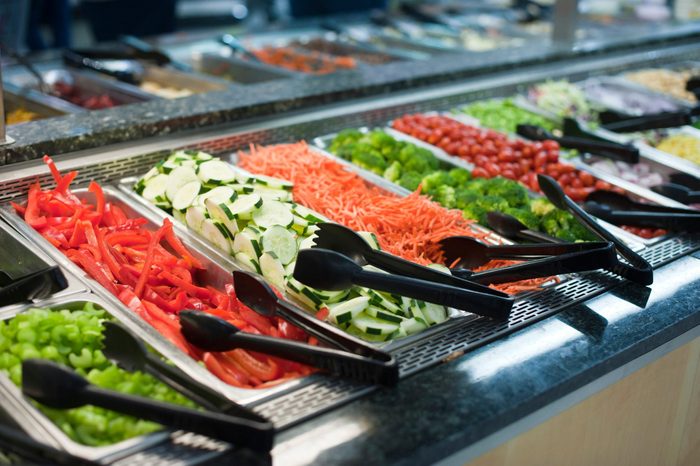
You may no longer be serving yourself
The do-it-yourself days of buffets may be over. Post-pandemic, we may no longer be the ones putting the food on our plates. Guests will most likely just point to the food that they want behind a clear plastic divider and servers will place the food on their plate. “That way, only one person will be holding the serving utensils,” says Laurie Wilkins, founder of the travel guide Call Outdoors, noting that this can reduce the potential for bacteria and germ transmission. Speaking of germs, these are the dirtiest items in a restaurant.
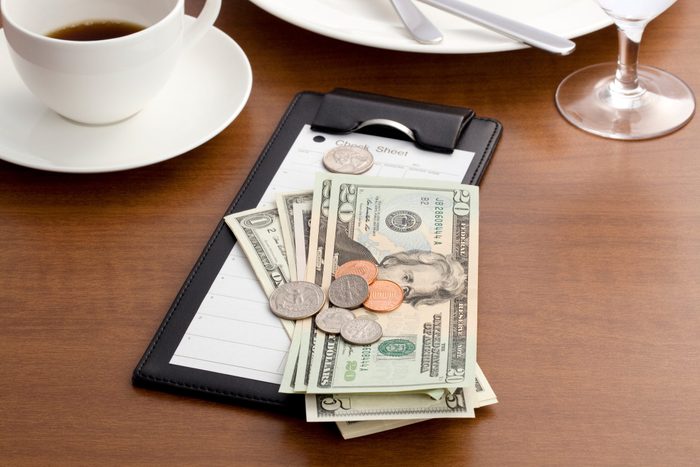
Expect higher costs
Buffets have notoriously been known as a “great deal” in terms of value for the price paid—especially if you typically order appetizers and desserts. But that may be changing, too. “Food and labor costs are rising rapidly, so don’t be surprised if you are paying a lot more for your brunch,” says Tidwell. The added cost of the new safety protocols also negatively impacts a hotel’s bottom line, further strengthening the case for higher prices.

There will be a new focus on sustainability
Thankfully, there are some silver linings to get excited about when looking at the “new normal” of hotel buffets. “The new approach to breakfast offerings is also more sustainable, which had become a big topic of conversation prior to the pandemic,” reports Pohl. “Breakfast buffets had previously expanded to include too many choices, and food would end up going to waste. With reduced breakfast offerings, hotel chains are improving upon supply and demand and striving to create the perfect balance to satisfy consumers preferences while curbing food waste.”

Hand sanitizer is here to stay
Hand sanitizer has become a staple everywhere, and hotel buffets are no exception. Free-standing hand-sanitizing stations will likely be set up at various access points throughout the buffet. “These hand sanitizers might also have a hands-free foot pump dispenser, since the surface of hand-sanitizer bottles may potentially be unsanitary as well,” says Wilkins.
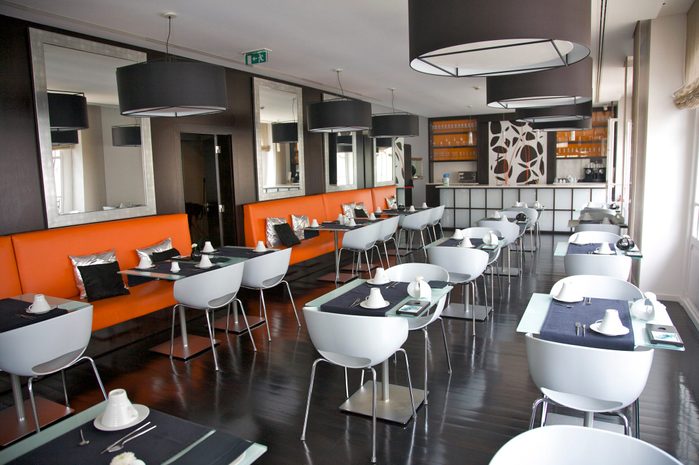
Breakfast rooms will no longer be sealed off
Many dining rooms were closed for a good portion of the past 18 months in order to avoid congregation and interaction between guests. Instead, hotels had guests eat in their individual rooms. But those dining rooms are reopening now. “Breakfast dining room limitations vary across the country, as hotel properties must follow local and state regulations,” explains Pohl. “In states where social-distancing measures are still in place, hotel guests will find that breakfast rooms have been modified to allow for more space between tables.” This is why hotels have an ice machine.
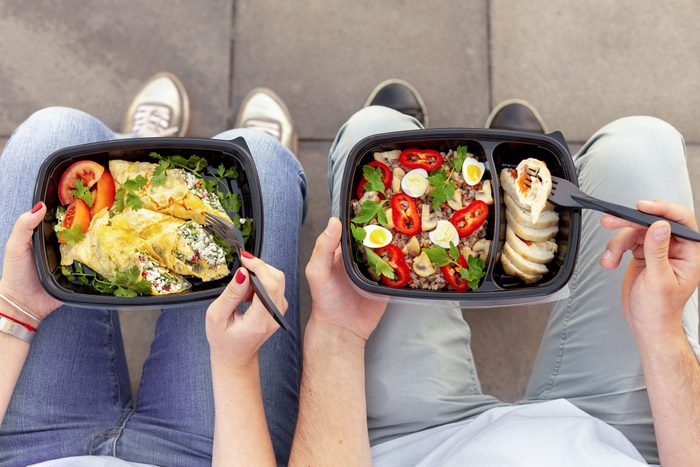
Grab & Go is still up for debate
The decision to keep or get rid of Grab & Go items may be location- or demographic-dependent. Tidwell says that his resort’s Grab & Go options will remain due to their popularity. “It’s fast, efficient and safe,” he says. “The advantage is that you can service those guests who are in a hurry to get up and out of the hotel first thing in the morning.”
On the flip side, Best Western Hotels & Resorts discontinued Grab & Go at its properties on July 15, 2021—with the exception of those located in states with government restrictions and for guests departing before breakfast-room hours. “Grab & Go options are not as popular as they once were,” says Pohl. “To provide guests with a high-quality breakfast experience, hotels are starting to lean more on offering staff-served and pre-plated breakfast offerings.”
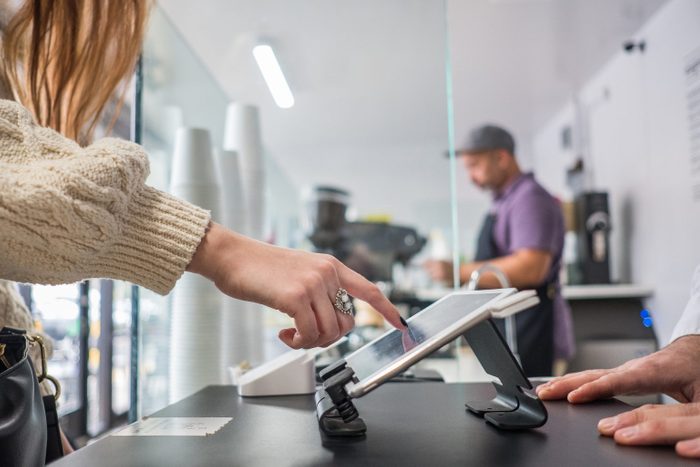
Contactless ordering and QR codes are sticking around
Some hotels have implemented contactless ordering with the use of a device rather than having a server physically come to take your order. That way, the only contact with another human will be the delivery of the food to the table. Another option that helps reduce contact points is viewing your menu via a QR code, which is just one way hotels are changing forever. “The younger generations definitely favor the QR code menu access, but our older clients prefer printed menus,” says Tidwell. “In order to please everyone, we will continue with both options. It’s easy enough.”

Room service will remain popular
Another hotel amenity favorite, room service, continues to be a challenge for some properties due to the ongoing labor shortage in the hospitality industry. But for those who can find the manpower, room service is still a popular option. “Following state and local guidelines, room service at select Best Western Hotels & Resorts properties has returned,” says Pohl. “More so than ever before, guests enjoy the convenience of having breakfast delivered to their room.” Here are some tips for traveling with food.
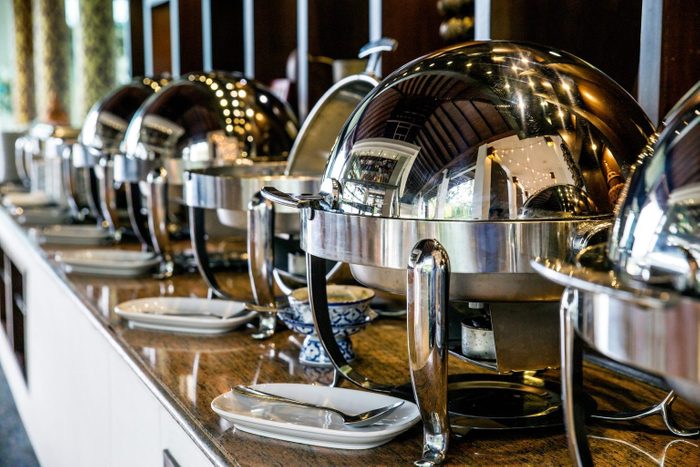
Directional buffets will continue at some hotels
Some hotel buffets have transitioned to a one-way street, meaning guests will only be able to move in one direction (just like many stores that placed directional arrows on the floor to help encourage one-way traffic flow and social distancing). But not every property follows that protocol. “If the buffet is two-sided, guests can flow easier and the line actually moves quicker. Plus, there are fewer backups and less standing and waiting times, which is preferred in a post-COVID world,” says Tidwell.
Sources:
- Ron Pohl, senior vice president and chief operations officer of Best Western Hotels & Resorts
- Raymond Cua, founder of Travelling Foodie
- Mike Tidwell, director of sales and marketing at the Seaview Hotel and Golf Resort
- Laurie Wilkins, founder of Call Outdoors

